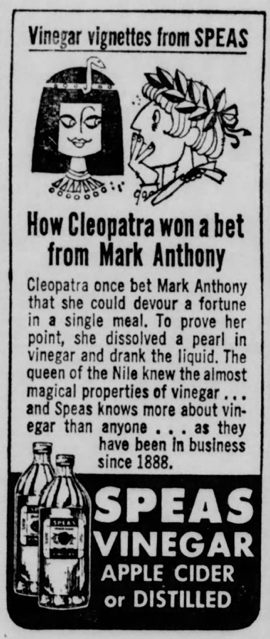“Vin aigre” or Vinegar, as we know it nowadays, is a staple ingredient found in pantries all over the world. It is taken for granted, up to the point that most of us do not know what it is or where it comes from. These 4 articles will exactly tackle this gap of knowledge, hopefully bringing some light into the unknown that sits under our noses.
Let's start simple, vinegar can be described as an alcoholic liquid that has been allowed to sour: think of the wine or cider versions of it; these can be sold by wineries and cideries when they have had an unexpected, but weirdly positive, bacterial infection. Unfortunately, describing vinegar this simply means ignoring the big, interesting and complex world it withholds. Vinegar is no new business, proof of this is its appearance in the new and the old testament. Basically, it has been around since we started having wine, a drink that is estimated to be 6100 years old. When these low-sulfite and rustic versions of fermented grape juice were exposed to oxygen, they immediately had the chance to sour because they naturally had everything necessary to make vinegar happen: ethanol, sugars and most importantly the genus acetobacter. This bacteria transforms ethanol into acetic acid, the chemical creted gives the acidity and pungency making vinegar, well... vinegar.
Now, although vinegar probably appeared 4000 years BC, the first recordings of it being put into use appear 1000 years later, in the Babylonian empire. Babylonians used dates to make alcoholic beverages which transformed naturally into vinegar; this was then used for food preservation, mostly through pickling. Amazingly, this is just one of the hundreds of uses vinegar has been given throughout history. While in the Roman empire it got mixed with water to create Posca, a revitalizing drink that was given to tired soldiers, in Ancient Egypt it was included in burial rituals, most likely as an offering. Cleopatra used it to win a bet where she bragged that she could feast a meal worth 10,000,000 sesterces; legend says she dissolved an enormous pearl, one of the biggest in the world and proceeded to drink the liquid.
As true as this story might or might not be, one of the most shocking uses was given by the 17th& 18th aristrocracy, who took advantage of the piercing smell by placing vinegar damped sponges over their noses to avoid the waste and sewage smells from the cities.
1965 Vinegar add addressing Cleopatras most expensive dish - 
Societies have been creative and found all uses, shapes and forms for vinegar, however it seems like there is one common denominator, an application that popped up every time: Medicine. The use of vinegar to treat body issues goes back as far as Ancient Greece where Hippocrates, the "father of medicine", prescribed it to treat wounds, sores and respiratory diseases. It remained popular during the middle ages when doctors used as a digestive, as a prophylactic against liver disorders and got rubbed on the wrists to fight fever. It has now leaked onto our modern day through "clean eating" enthusiasts and influencers, but specially since Victoria Beckham said that "she starts each day with a gulp of apple cider vinegar".
This variety of uses meant the ingredient faced an ever-growing demand which called for a better and faster production. As a result, the first industrial production of vinegar was settled in 1394 in the french town of Orleans. This new company came along with the foundation of the first vinegar producer association, a collision where members pledged to keep their knowledge secret, if the oath were broken the member would be expelled of the collision. This regulation set ground for a vibrant industry, by 1580 the town had 33 factories that, because of its fruitiness and low acidity, all used the local wine. Throughout this time, the production technique saw serious improvement and so the “Orleans Method” was born. This methodology worked fastened the production by working with mother vinegar, backsloping and increased aeration.
The theory on how to make vinegar happen was graspped centuries ago, however it was the chemistry that reamained a bigger mystery. Many scientist studied it and made avancements but it was Louis Pasteur who published the final collection of vinegar knowledge in his memoir on acetous fermentation, in 1864. In here, he stated the 5 musts for vinegar making:
- alcohol
- oxygen
- A ferment: mycoderma aceti
- Nutrients: sugars & proteins - Naturally present in wine
- A temperature between 20 to 30ºC.
If you would like to gain Pasteurs knowledge and comprehend how vinegar is made, click here! (Lucky us who are not under oath and can share the secrets from vinegar making)
If you would like to see an attempt on making Vinegar at home, click here!
If you rather go straight to the kitchen and see different how you can include vinegar in your cooking, click here!